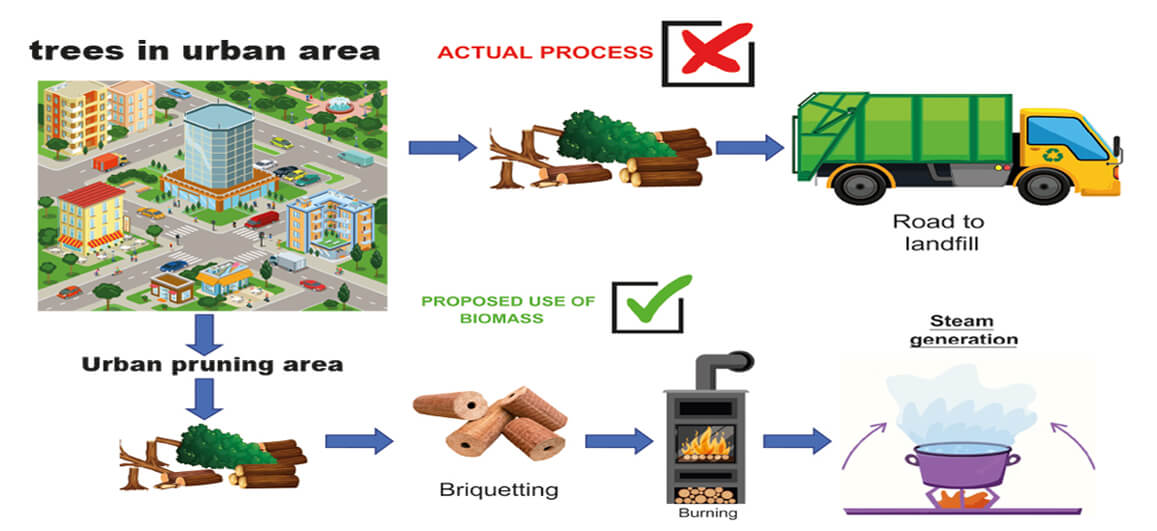 Open Access
Open Access
ARTICLE
Urban Plant Biomass Residues from the Neotropics and Their Potential for Thermal Energy Generation
1
Competitiveness and Sustainability for Development Research Group, Faculty of Engineering, Universidad Libre-Cúcuta Sectional,
Cúcuta, Colombia
2
Catalysis and Nanomaterials Research Group, Faculty of Mines, Universidad Nacional de Colombia-Medellín Sectional, Medellín,
Colombia
3
Detecal Research Group, Faculty of Engineering, Universidad Libre-Bogotá Sectional, Bogotá, Colombia
* Corresponding Author: John Freddy Gelves Díaz. Email:
Journal of Renewable Materials 2023, 11(9), 3547-3566. https://doi.org/10.32604/jrm.2023.029267
Received 10 February 2023; Accepted 11 April 2023; Issue published 20 July 2023
Abstract
The material associated with tree pruning in a city in the Colombian neotropics was characterized in order to determine its energy potential. The species studied for their relevance in the territory were Prosopis juliflora, Licania tomentosa, Terminalia catappa, Azadirachta indica, Pithecellobium dulce, Ficus benjamina and Leucaena leucocephala. Moisture content, bulk density, hygroscopic response, elemental chemical analysis, proximal analysis, calorific value, ease of ignition and combustion, thermogravimetric and heat flow analysis, steam generation capacity, and qualitative analysis of gases (mass spectrometry) were determined. The results that were obtained show high initial moisture contents that vary between 37% and 67% and a variable density (when dry) between 0.21 and 0.41 g/cm3 . Chemically, it was shown that all residues have lower carbon and sulfur content compared to a reference mineral coal. However, the residues of some species have higher nitrogen contents compared to the same coal. All biomasses are characterized by their high content of volatile fractions and by having a lower content of inorganic matter compared to carbon. The lower calorific values of these residues are between 14170 and 16928 kJ/kg, which are not negligible compared to other biomasses. This characteristic would be related to the high presence of hemicellulose in the residues. Flue gas monitoring revealed that there are different airflow needs in order to ensure complete combustion. Steam generation tests showed that the calorific value should not be the most relevant criterion to establish the potential use of the waste, since leucaena leucocephala, despite having the highest calorific value, was the material with the lowest performance in steam generation.Graphic Abstract

Keywords
Cite This Article
 Copyright © 2023 The Author(s). Published by Tech Science Press.
Copyright © 2023 The Author(s). Published by Tech Science Press.This work is licensed under a Creative Commons Attribution 4.0 International License , which permits unrestricted use, distribution, and reproduction in any medium, provided the original work is properly cited.


 Submit a Paper
Submit a Paper Propose a Special lssue
Propose a Special lssue View Full Text
View Full Text Download PDF
Download PDF Downloads
Downloads
 Citation Tools
Citation Tools